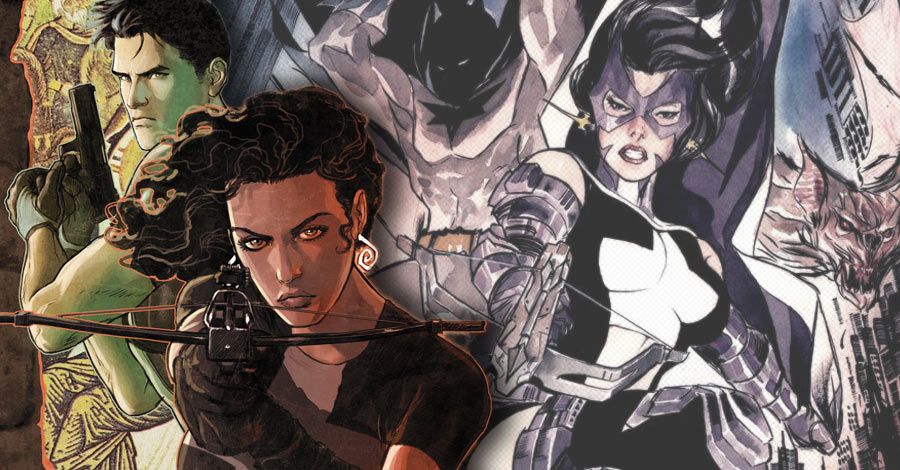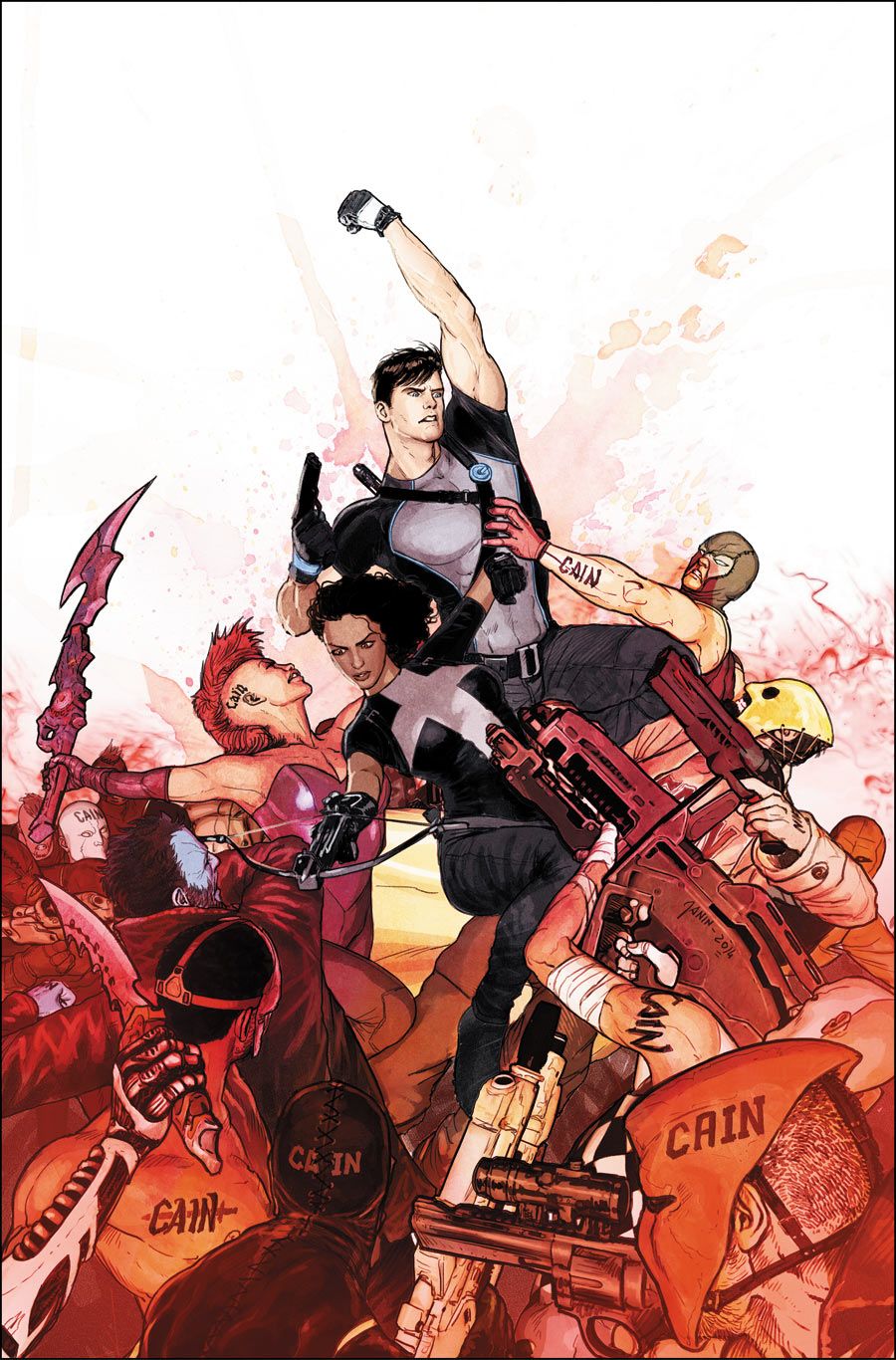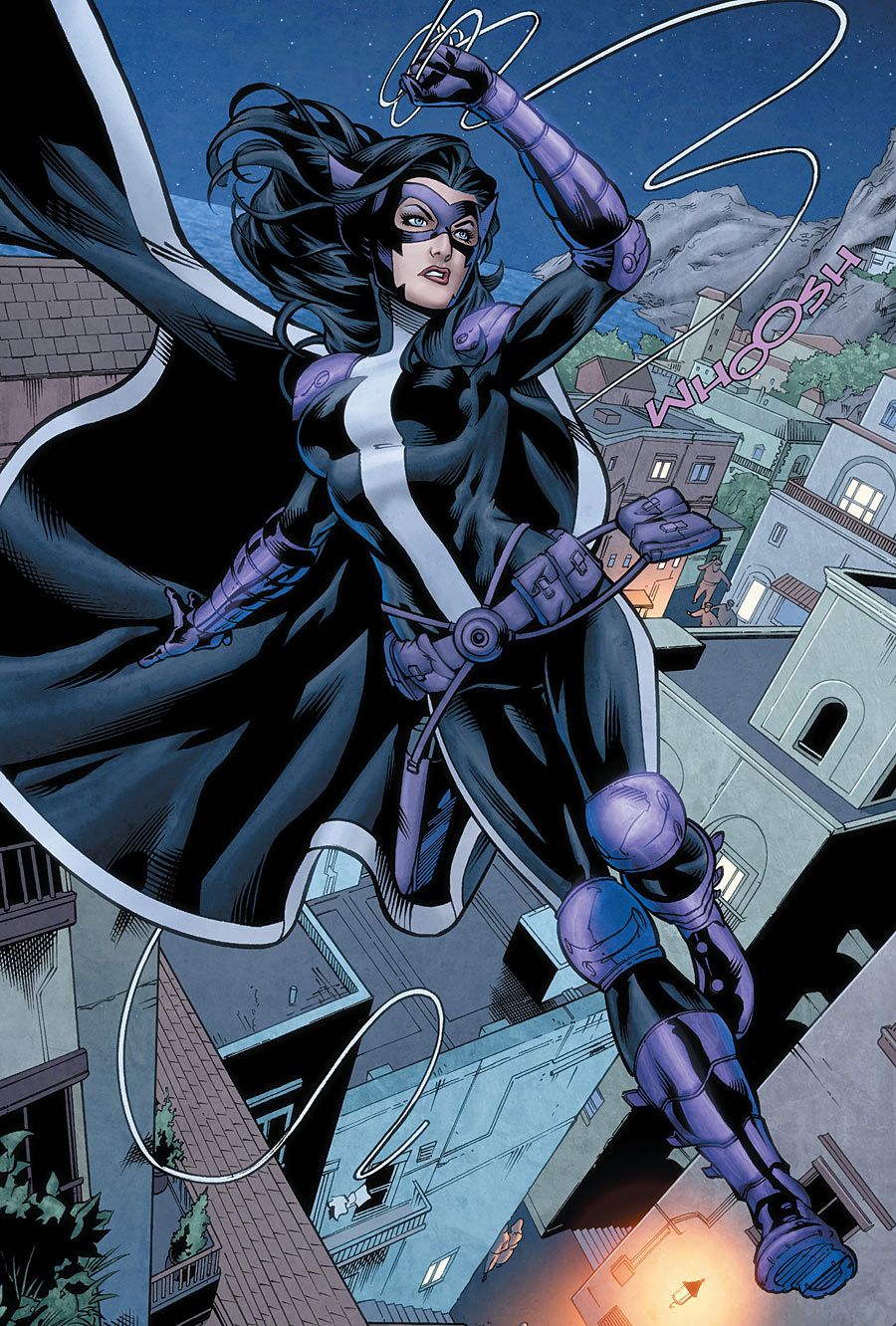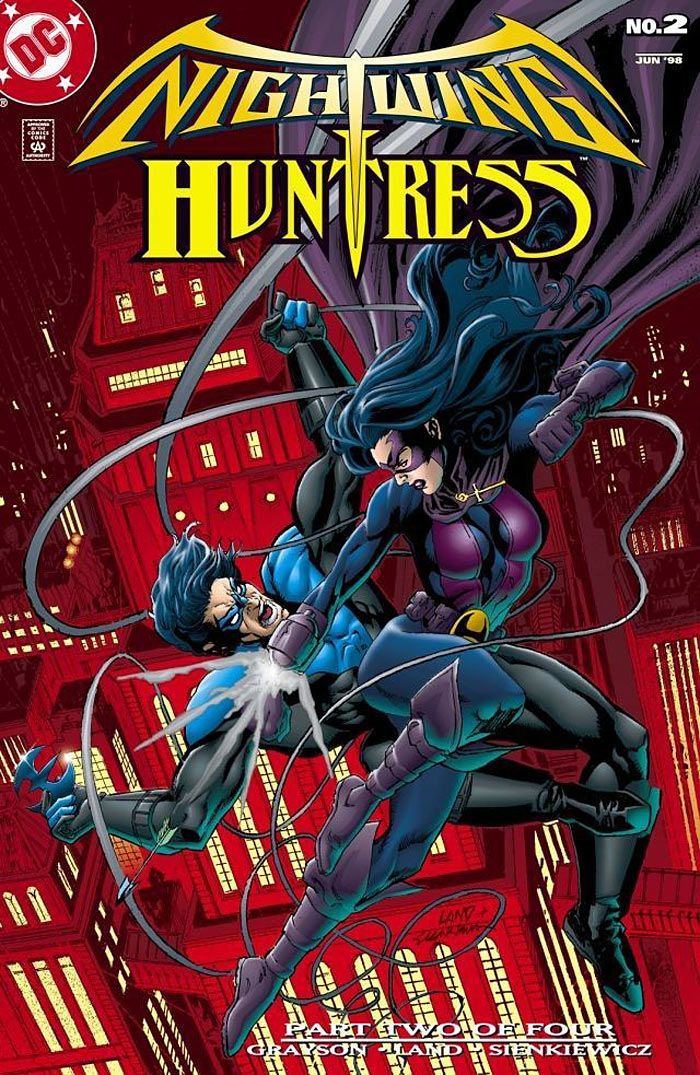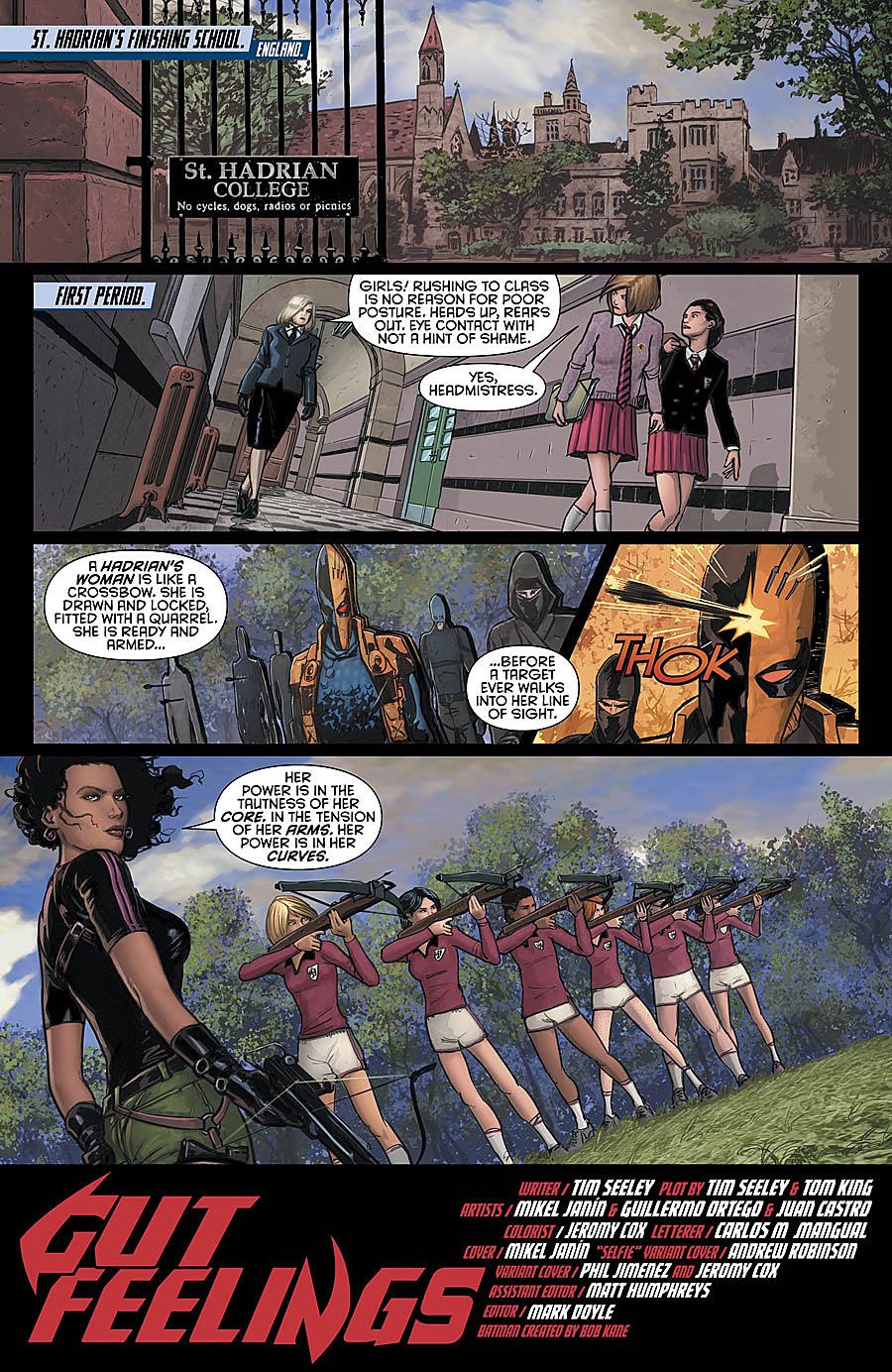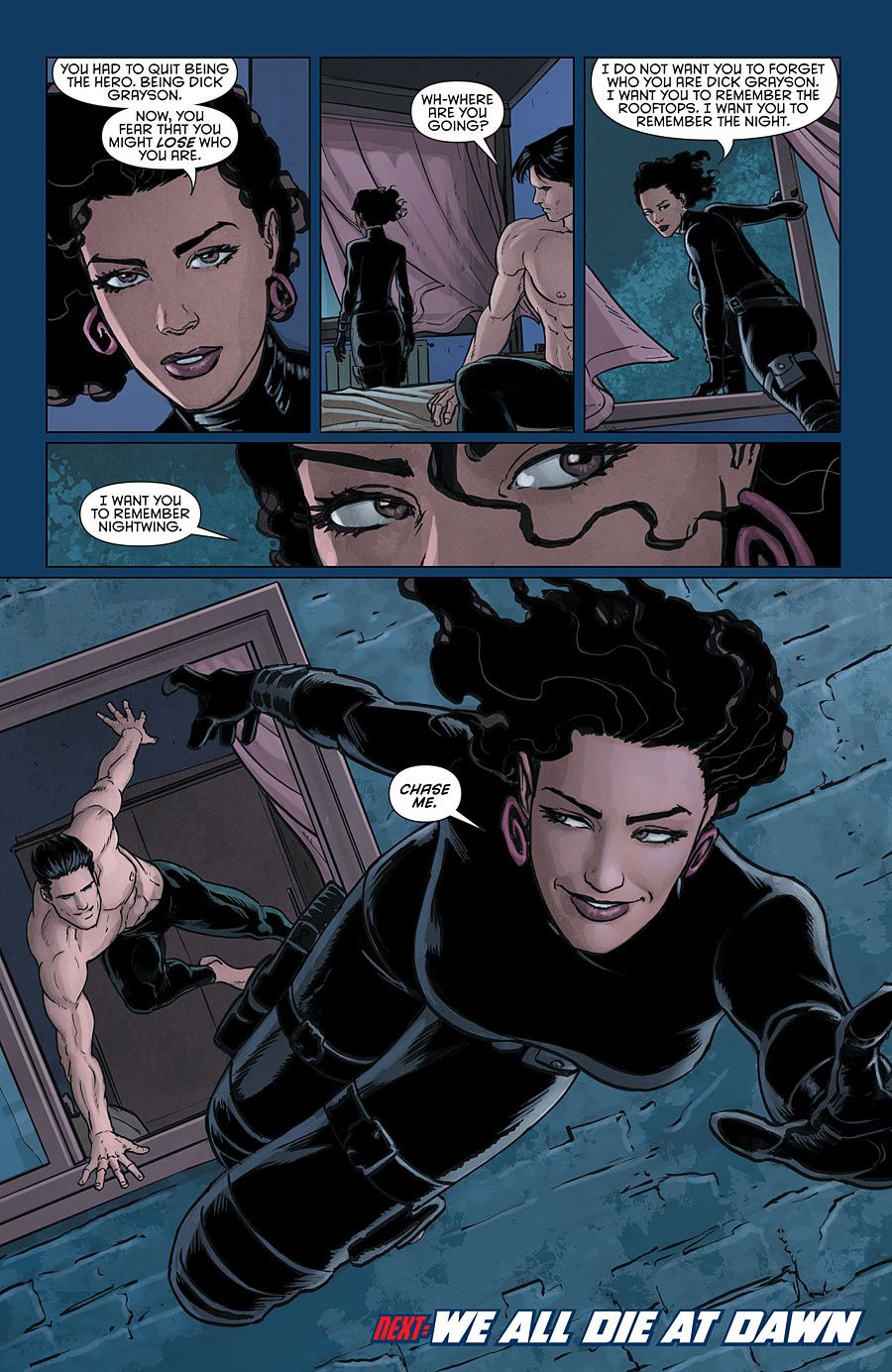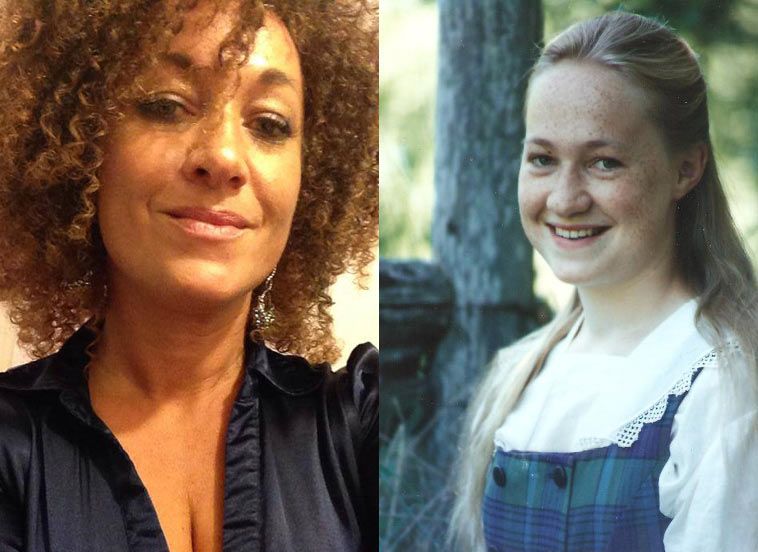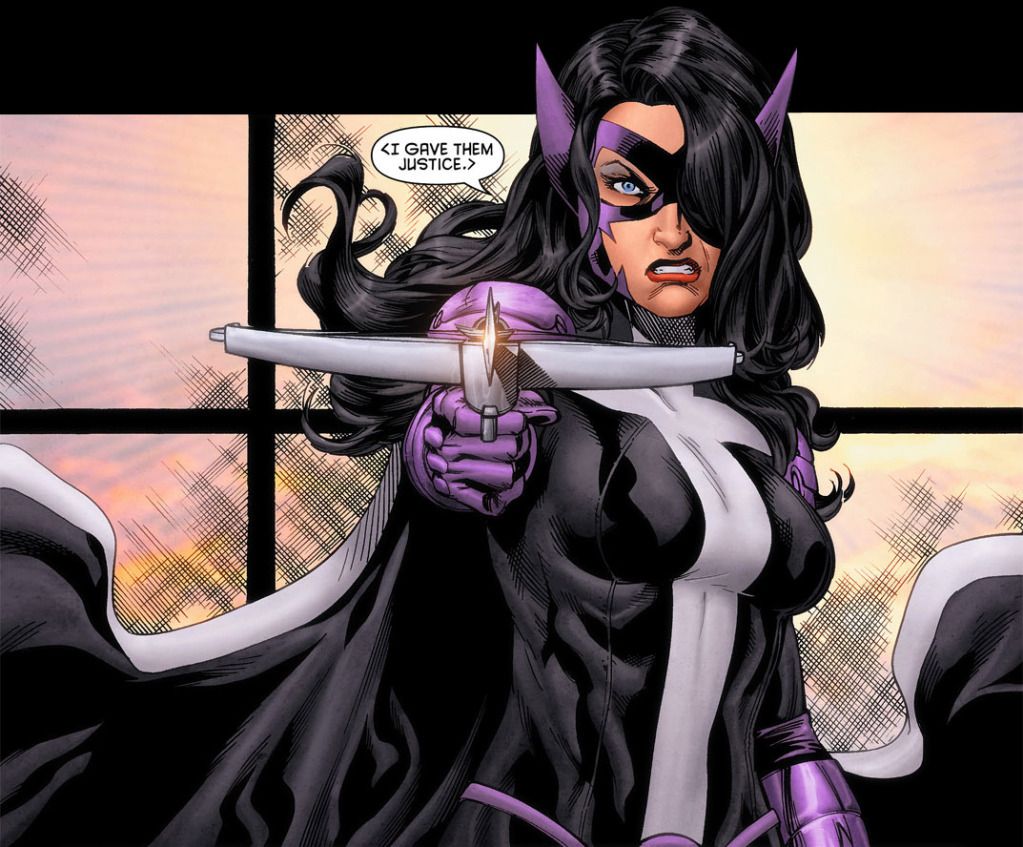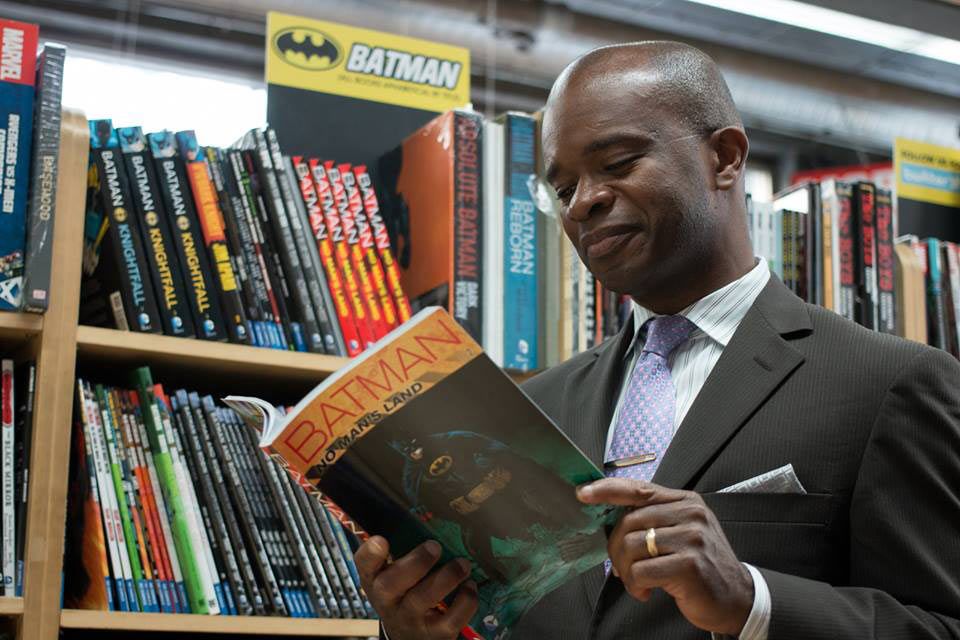On July 9, 2014, DC Comics released the first issue of "Grayson," a monthly comic book series featuring Dick Grayson, the first of Batman's sidekicks, in his new role as a spy for the covert global operations agency, Spyral.
Given the codename "Agent 37," Grayson was paired with superior officer and handler-of-sorts Helena Bertinelli, also known as "Matron."
A new spin on a character going back to 1977, Helena Bertinelli was originally the daughter of Batman and Catwoman, then became a member of the Italian mob family The Bertinellis. After her entire family is killed in a gang war, she would get revenge by taking on the costumed identity of The Huntress.
The newest version of Helena Bertinelli, appearing in "Grayson," is the granddaughter of Sicilian crime boss Frank Bertinelli, and one of the most wanted women in the world.
Seeley & King Discuss Grounding "Grayson" in Reality
She's also the darkest-skinned version of the character to ever appear in the publishing history of DC Comics. So much so, that at a quick glance at almost any covers or interior pages showing Helena, you could reasonably think she was Black.
Which I find pretty damn interesting.
Now this is the part where you're expecting me to talk about the Muslim Moors and their conquest of Sicily centuries ago, thus leading to a Sicilian Helena Bertinelli with dark skin.
No.
I don't think it's about history. I think it's about marketing and passive deception.
It's no secret that diversity is marketable now, but one model within diversity that continues to gain greater acceptance is that of the interracial couple.
In 2012, The Wall Street Journal reported that 15% of new marriages in the United States in 2010 were for interracial couples, based on a study from the Pew Research Center.
In October 2013, National Geographic released an article called "The Changing Faces of America," profiling various bi-racial Americans.
From 2013-2014, General Mills had a successful multi-commercial campaign for their Cheerios cereal, showing an interracial married couple and their bi-racial daughter.
In July 2014, the first issue of "Grayson" hit the stands.
Obviously, there are more markers of the growing appeal of the interracial couple demographic, and "Grayson" was likely in development anywhere from six months to one year before its release, but the visibility of the shift in America's acceptance was certainly clear.
And make no mistake, Dick Grayson and Helena Bertinelli are a couple. While not sexually involved (yet), you could cut the sexual tension between the two characters with a butter knife and wrap it in silk sheets.
Helena Bertinelli has appeared with Dick Grayson on roughly half of the covers for a series that isn't a year old yet.
DC Comics is, apparently, marketing the interracial couple aesthetic of the two characters... without committing to a bi-racial heritage for Helena.
What does this matter, right?
The sequential art medium is the union of words and pictures in a unique way that has its own strengths, but consumers don't see the words first, the writing.
They see the art.
"Prince of Cats" writer/illustrator Ronald Wimberly wrote an excellent and illuminating blog about the impact and importance of color to communicate racial identity in comic books.
"Art is where we form the narratives of our identity," he said, and I wholeheartedly agree.
Let's consider a few more things:
The female consumership of comic books and graphic novels has grown significantly, to the point where women as a group are specifically and admittedly targeted to increase sales by at least five of the top ten comic book publishers. Marvel Comics, DC Comics, BOOM! Studios, IDW and Dynamite Entertainment.
Dick Grayson is one of the most interesting characters is American superhero comics when it comes to the subject of sexuality.
Just Google "Dick Grayson's ass" and see what happens.
Women of color have made it clear they want to see themselves reflected in comic book fiction, and the strong presence of groups such as "Black Girl Nerds" created by Jamie Broadnax speaks to this.
Combine those three elements, and you have a compelling reason why DC Comics would want a dark-skinned woman working with Dick Grayson in a monthly comic book.
Her name is Helena Bertinelli, in order to push the Bat-buttons of Batman fans, but am I expected to believe she is 100% Italian?
Not Afro-Italian?
The day this column is released, Rachel Dolezal, the President for the Spokane Chapter of the National Association for the Advancement of Colored People (NAACP), resigned from her position.
Dolezal had identified herself as a bi-racial person for years, but was recently revealed to have two White parents and thus being White, herself. With evidence mounting to the latter, and Dolezal refusing to comment specifically on the former, it's quite apparent that she lied.
More often, the "passing" of a person from one ethnicity living life as someone other than of their true heritage involves a person of color identifying themselves as being White.
This revelation about Dolezal and its ripple effects are considerably more impactful on American society, at the very least, than a monthly superhero comic book.
Nonetheless, racial identity is important.
Demographics are built around it. We are asked on various forms for employment and online surveys to identify our race, because companies want to make money off of people of color.
They want to know population concentration, spending habits, eating habits, partner-choosing habits, and so on.
If you're going to utilize the aesthetic of racial identity to make money, then don't dance around the subject.
It's insulting.
The visual deception of diversity is just as problematic as the absence of diversity.
Maybe Helena Bertinelli is just an alias, her whole reported life a piece of fiction, and she's really someone else, a bi-racial someone else.
Or maybe she's exactly what she is written as, but colored as something else.
I guess we'll find out when Helena has Dick's baby.
She or he will be one beautiful child.
Joseph Phillip Illidge is a public speaker on the subjects of race, comics, and the corporate politics of diversity. In addition to his coverage by the BBC and Publishers Weekly, Joseph has been a speaker at John Jay College of Criminal Justice, Digital Book World's forum, Digitize Your Career: Marketing and Editing 2.0, Skidmore College, Purdue University, on the panel "Diversity in Comics: Race, Ethnicity, Gender and Sexual Orientation in American Comic Books" and at the Soho Gallery for Digital Art in New York City.
Joseph is the Head Writer for Verge Entertainment, a production company co-founded with Shawn Martinbrough, artist for the graphic novel series "Thief of Thieves" by "The Walking Dead" creator Robert Kirkman, and video game developer Milo Stone. Verge has developed an extensive library of intellectual properties for live-action and animated television and film, video games, graphic novels, and web-based entertainment.
His graphic novel project, "The Ren," about the romance between a young musician from the South and a Harlem-born dancer in 1925, set against the backdrop of a crime war, will be published by First Second Books, a division of Macmillan.
Joseph's newest comic book project is the upcoming Scout Comics miniseries "Solarman," a revamp of a teenage superhero originally written by Stan Lee.

